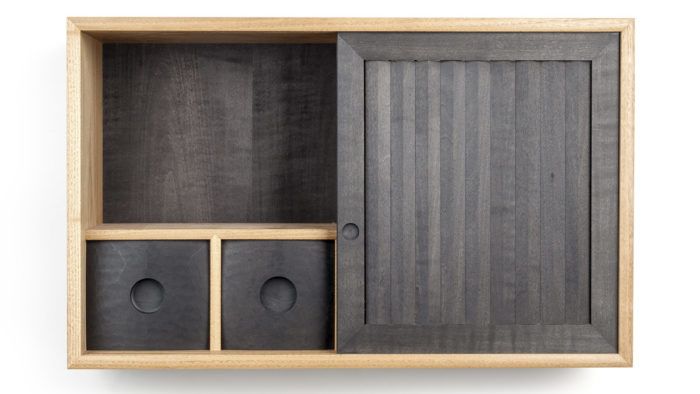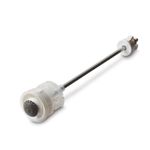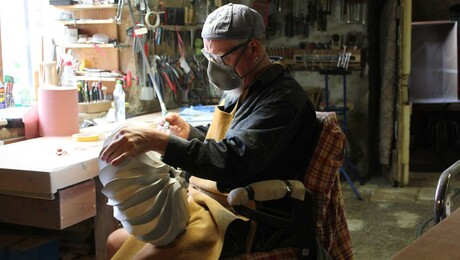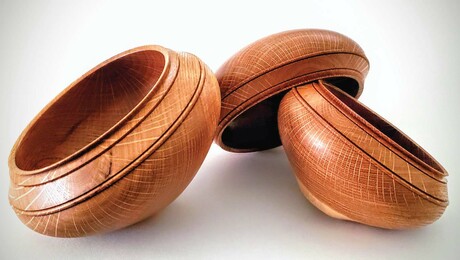How They Did It/Back Cover: Curriculum Cabinet
Learn how Jon Billing turned the drawer fronts and recessed pulls on his wall cabinet
When Jon Billing of Big Sand Woodworking in Brooklyn, N.Y., decided his small, rectilinear wall cabinet needed round, recessed finger pulls, his first thought was not to drill them out, but to turn them on the lathe. This enabled him to obtain a recess with a perfectly flat, smooth bottom and to undercut the sides for a better finger grip. He also domed the maple drawer fronts on the lathe, creating a subtle but striking effect. He dovetailed the drawer after it was shaped, creating a hollowed cork caul to stabilize the front.
For Billing, 32, a largely self-taught furniture maker in Brooklyn with a background in guitar building and sculpture, each new piece of furniture is another step in his education, another opportunity to explore new materials, new techniques, new textures and patterns. He built the case of this recent wall cabinet with sassafras, and discovered that when planed, the wood is “a real pleasure to work, with a nearly intoxicating aroma.”
For the sliding doors, another first: He created pleated panels, filling the frames with rows of unglued pyramidal slats. When it came to the drawers, to contrast the many straight lines in the piece, he decided on round, recessed finger pulls. Ever inventive, rather than drilling the pulls he mounted the drawer fronts on the lathe and turned them; and while he had them there, why not dome the drawer fronts? After covering the convex fronts with subtle chiseled facets, he took one more shot in the dark, ebonizing the cabinet’s maple doors and drawers with Japanese sumi ink to give them a smoky, charcoal color.
Using a Forstner bit to keep the drawer front centered on his lathe’s faceplate, Billing screws down four retaining blocks. Billing then uses a gouge to give the drawer front a gently domed shape. After roughing out with a gouge and using a small skew to flatten the bottom of the recess, Billing uses a hook-nosed tool to undercut the rim. A flat chisel trims away the turning-tool marks on the domed surface of the drawer front, creating a pattern of overlapping facets.
For the full article, click on the PDF below:
Fine Woodworking Recommended Products

Blum Drawer Front Adjuster Marking Template

CrushGrind Pepper Mill Mechanism





















Log in or create an account to post a comment.
Sign up Log in